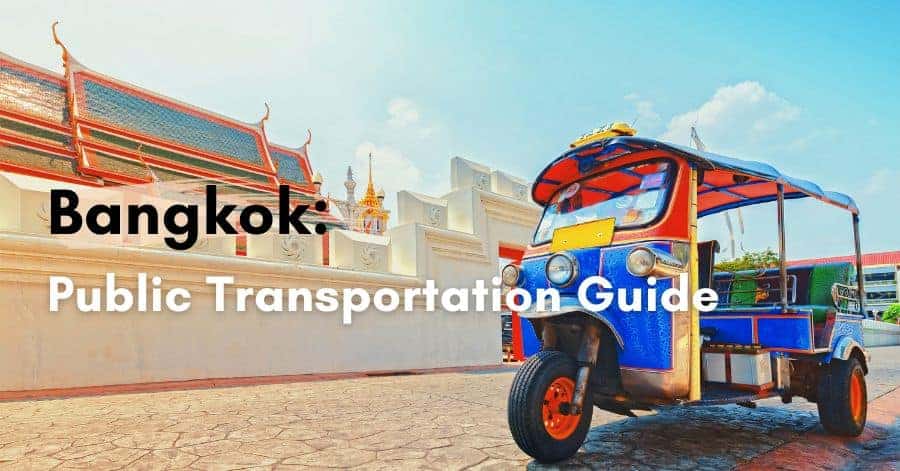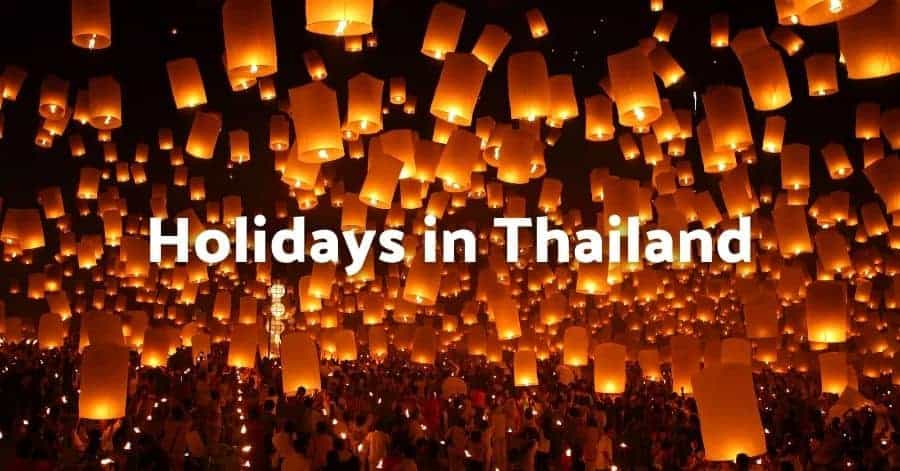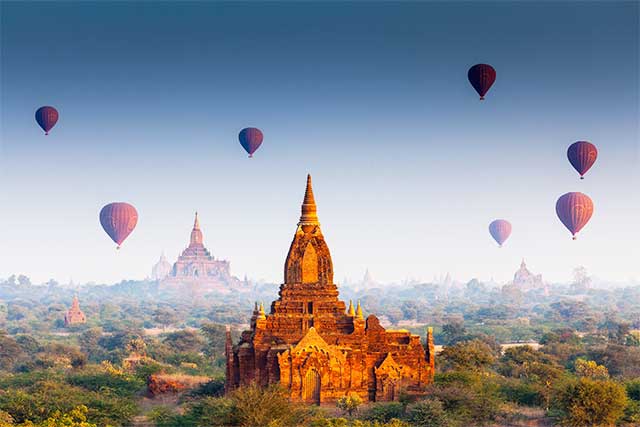Anyone that has been to Bangkok knows how bad the traffic congestion can get during rush hour. Cars are regularly stuck in massive jams for hours, and the traffic can test the patience of even the calmest people. However, Bangkok, a vast city, has many options to avoid gridlock during rush hour. There are many ways to get around this massive metropolis, from skytrains and subways to tuk-tuks and boat ferries. If you’re traveling to Bangkok, it is essential to understand how the Bangkok public transportation system works. Here is a quick guide on all the different modes of public transport, how to use them, and all the tips for the cheapest options.
Read also:
- Best Authentic Thai Restaurants in Bangkok, Thailand
- Cool and Unique Things to do in Bangkok, Thailand
- 11 Plus Best Things To Do At Night In Bangkok with Friends
- Best Things to Do in Bangkok Thailand
BTS Skytrain
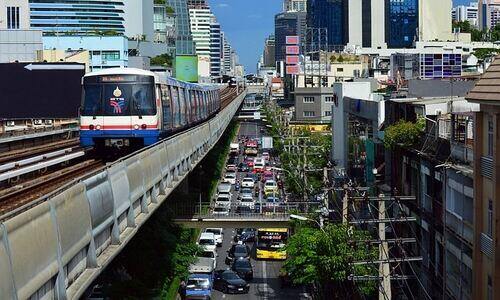
One of the best Bangkok public transportation to avoid getting stuck in traffic is hopping onto the BTS Sky train. The Skytrain in Bangkok is an elevated rapid railway system that covers all the main attractions in the city, particularly the Sukhumvit and Silom districts. The three BTS lines are the Sukhumvit, Silom, and Gold lines. With three separate lines and over 62 stations, the BTS Skytrain will take you to every major highlight or main area within Bangkok. Siam is the busiest station, connecting all the different BTS routes, and is centrally located near all the major malls.
Tickets and prices: The BTS uses a card system for their ticketing process. You can buy them using coins through ticket machines or directly through the customer service windows. To get inside the station, you must tap your card onto a turnstile and check the map to see which line your destination falls under. Ticket prices for single journeys depend entirely upon the distance of your trip. The closer your destination, the cheaper the fare, with fares starting from USD 0.46 (16 THB) and going up to USD 1.70 (59 THB). You can also buy a one-day pass with unlimited access to all stations for 24 hours for around USD 4.04 (140 THB).
Timings: Trains run every 5-10 minutes from around 5:30 am to midnight. The frequency of trains depends on the station and the time of day, with rush hour meaning longer wait times.
Check BTS Skytrain Map






MRT Subway/Underground
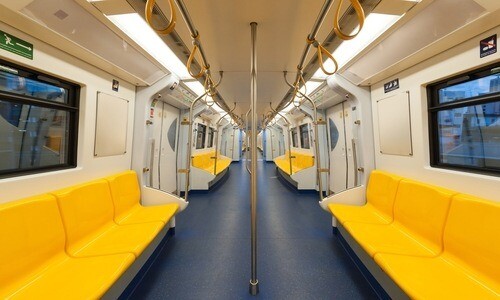
Another great Bangkok public transportation is the Metropolitan Rail Transit or MRT. It is a major underground railway system that covers large parts of greater Bangkok. Another great way to beat the traffic during congestion hours, the MRT has two separate lines consisting of 53 stations. Compared to the BTS lines, the MRT covers more ground and reaches areas with no Skytrain stations. Additionally, several MRT stations have an interchange link with the BTS, so switching from one to the other is very easy.
Tickets and Prices: Like the BTS Skytrains, the prices for fares depend on the distance of your journey. The closer the destination, the cheaper the fare. Prices start from USD 0.43 (15 THB) to around USD 1.4 (50 THB) for longer distances. Instead of the ticket cards like in the BTS, you receive a small token tapped on turnstiles to access the trains for single-journey trips. These tokens can be purchased through ticketing machines or customer service windows. You can also opt to purchase a ticket card that you top up with cash if you don’t want to buy a token every time you use the MRT.
Timings: The MRT runs daily from around 6:00 am to midnight on the Blue line and from 5:30 am to midnight on the Purple line. However, public holidays may affect these operating hours. Like the Skytrains, trains arrive and depart every 5-10 minutes, but this may change during rush hour.
Taxis
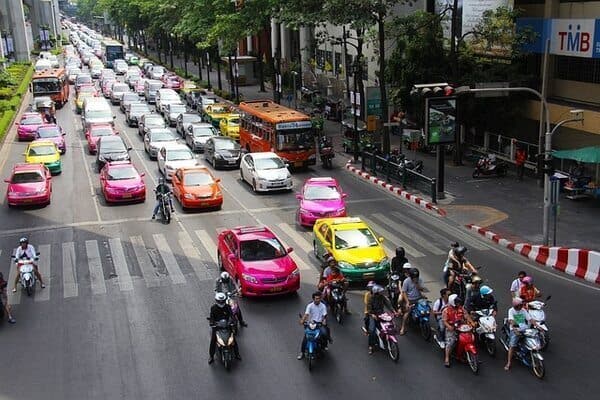
Bangkok is well known worldwide for its endless number of colorful taxis that line the streets. Despite the terrible traffic, taxis are a great way to travel short distances within the city. While all taxis in Bangkok are legally meant to use the meters for rides, this is not always the case. Unfortunately, there is a growing trend among drivers to refuse meter usage as they prefer an inflated fixed rate. If you encounter this, it is best to insist on using the meter or try to negotiate a price you are comfortable with. Aside from this inconvenience, taxis are still an iconic part of Bangkok’s identity. They are a safe, affordable, and comfortable way of getting around the city. Another tip is to hail a taxi from the street rather than hire one parked in a tourist area. Drivers parked in popular tourist areas will typically inflate their fare prices and refuse to use their meters.
Prices: Meters start at USD 1 (35 THB), and the average price within the city is around USD 3-6 (100-200 THB). A taxi from the airport will use meters, but there is an added USD 1.4 (50 THB). The passenger must pay all tollway and expressway fares and cost anywhere between USD 07.-2 (25-70 THB).
Tuk-Tuks
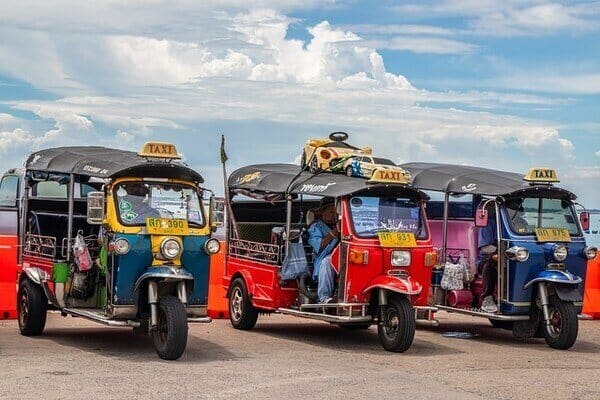
Like taxis, Tuk-Tuks are synonymous with the identity of Bangkok. They are found on nearly every corner and are a fun and quick way to get around. However, Tuk-Tuks have also developed a reputation for scamming and overcharging. Always refuse to stop at shops or sights, as these are common scams where drivers earn a commission. Tuk-Tuks are not the cheapest option, but they can be a great experience traveling a short distance within the city.
Prices: Fares depend quite heavily on your ability as a bargainer. Drivers usually quote a starting price of around USD 5.7-8.6 (200-300 THB), even for a short ride. Since they don’t have meters, you can expect to pay anywhere from USD 4.3-14.4 (150-500 THB), depending on your negotiating skills!






Motorbike Taxis
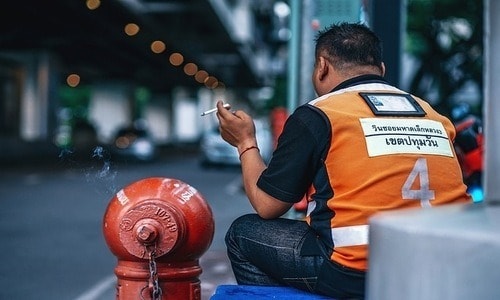
The quickest way to get around but also the most dangerous, Motorbike Taxis are very popular in Bangkok. There is no better way to beat the traffic, but the risks of riding on these two-wheelers are quite high. Motorbike taxis are everywhere, and you can hail from one of the many stops on nearly every corner. Drivers typically wear bright orange vests, so identifying them is very easy. If you do opt for a bike taxi, make sure always to wear your helmet!
Prices: Fares depend entirely on the distance and can cost anywhere between USD 0.50-6 (20-200 THB) within the city.
Buses
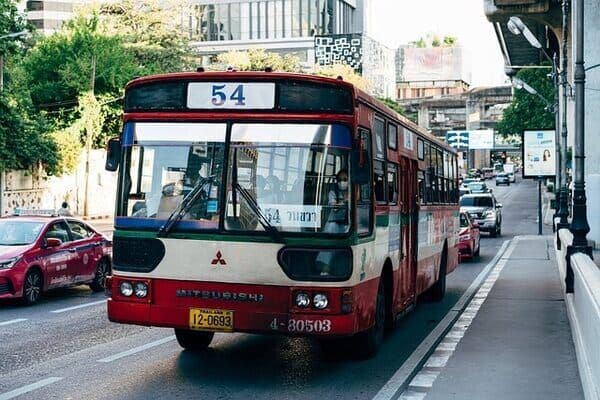
Buses, a great Bangkok public transportation, are not popular with tourists but are the cheapest option to get around the city. While the routes and stops are confusing for non-Thai people, it is still a useful mode of transport once you get the hang of it. It is advisable to buy an English translation of the Bangkok bus maps from 7-11 before you hop on a bus. You can also use the Bangkok Bus Map app or the Bangkok Mass Transit Authority website to navigate the city’s many bus routes and stops. It may not be the most comfortable transport, but it is certainly budget-friendly. Most buses typically operate every day from 6 a.m. to midnight.
Prices: Fares depend on the bus type, the trip’s timing, and the distance to your destination. A bus conductor usually comes to collect your cash; you simply have to let him/her know where you want to get off. You typically pay USD 0.26-0.79 (9-25 THB).
Maps and Routes:
Bangkok Bus Map app
BMTA website
Airport rail link
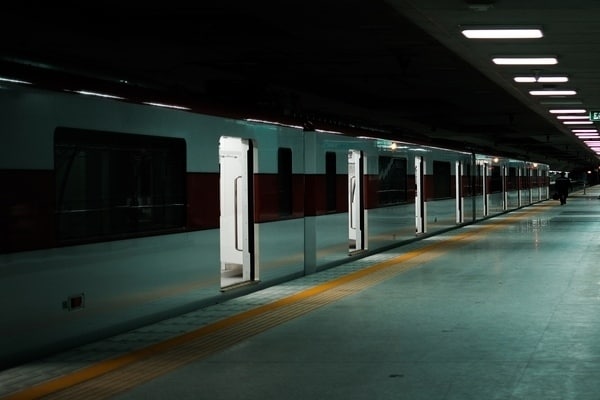
The airport rail link is an express railway system that connects the main Suvarnabhumi International Airport with the central parts of Bangkok. This is the quickest and cheapest way to commute to the city from the airport, with the only downside being that you have to carry your luggage with you. The train takes 35 minutes from the airport to the final station at Phaya Thai, stopping at several stations along the way. This train system runs every day from 6 am till midnight.
Prices depend on the journey, with the farthest distance from the airport costing USD 1.3 (45 THB) and the nearest costing USD 0.43 (15 THB).
Boat Taxis
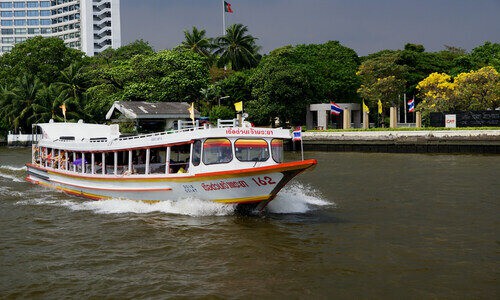
Boat taxis are an affordable and easy way to beat the traffic and the overpriced taxis in Bangkok. The three main boat taxis in the city are the Chao Phraya Express taxis, the Chao Phraya ferry, and the Khlong San express boats.
Chao Phraya Express
This service is very convenient and cheap but can confuse first-time users. Four main routes are identified using their flags. Prices are between USD 0.30-0.92 (10-32 THB), and the tourist boat is around USD 1.1 (40 THB) for a single journey and USD 4.3 (150 THB) for a one-day pass.
- Green Flag Boat: This boat caters to the visitors to Ko Kret, running between the stations of Pak Kret and Sathorn.
- Orange Flag Boat: This service takes passengers between the stations of Nonthaburi and Wat Rajsingkorn.
- Yellow Flag Boat: This service operates between the station of Nonthaburi and Sathorn.
- No Flag boat: Like the Orange flag boat, this route also operates between the stations of Nonthaburi and Wat Rajsingkorn.
- Blue Flag: The blue flag boat is a separate service catering mainly to tourists. This route also operates along the Sathorn and Phra Athit routes.
Khlong San Express boats
One of the quickest and cheapest ways to get around the city, this express service runs through the many small canals throughout Bangkok. The service takes passengers through Wat Saket to Khao San road and the popular Central World shopping mall. For a single journey, prices are around USD 0.23-0.58 (8-20 THB). To see prices and the route map, check out this website.
Chao Phraya Ferry
This service takes commuters from one side of the river to the other. Prices are very cheap, costing between USD 0.08-0.1 (3-5 THB).
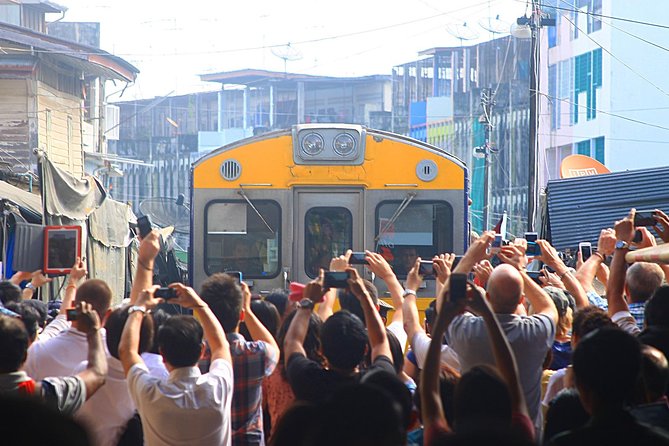





With so many options and routes, the Bangkok public transportation system can be quite daunting for newbies. It’s important to research before you venture out, especially if you are a first-timer. Apart from Tuk Tuks and Taxis, getting around the city is very cheap, and you can cover long distances spending very little in a day. Once you get the hang of it, the Bangkok public transportation system can be a great and affordable way to explore Bangkok and even avoid horrendous traffic.
Check Out Handpicked Best Tours & Activities in Bangkok!

























